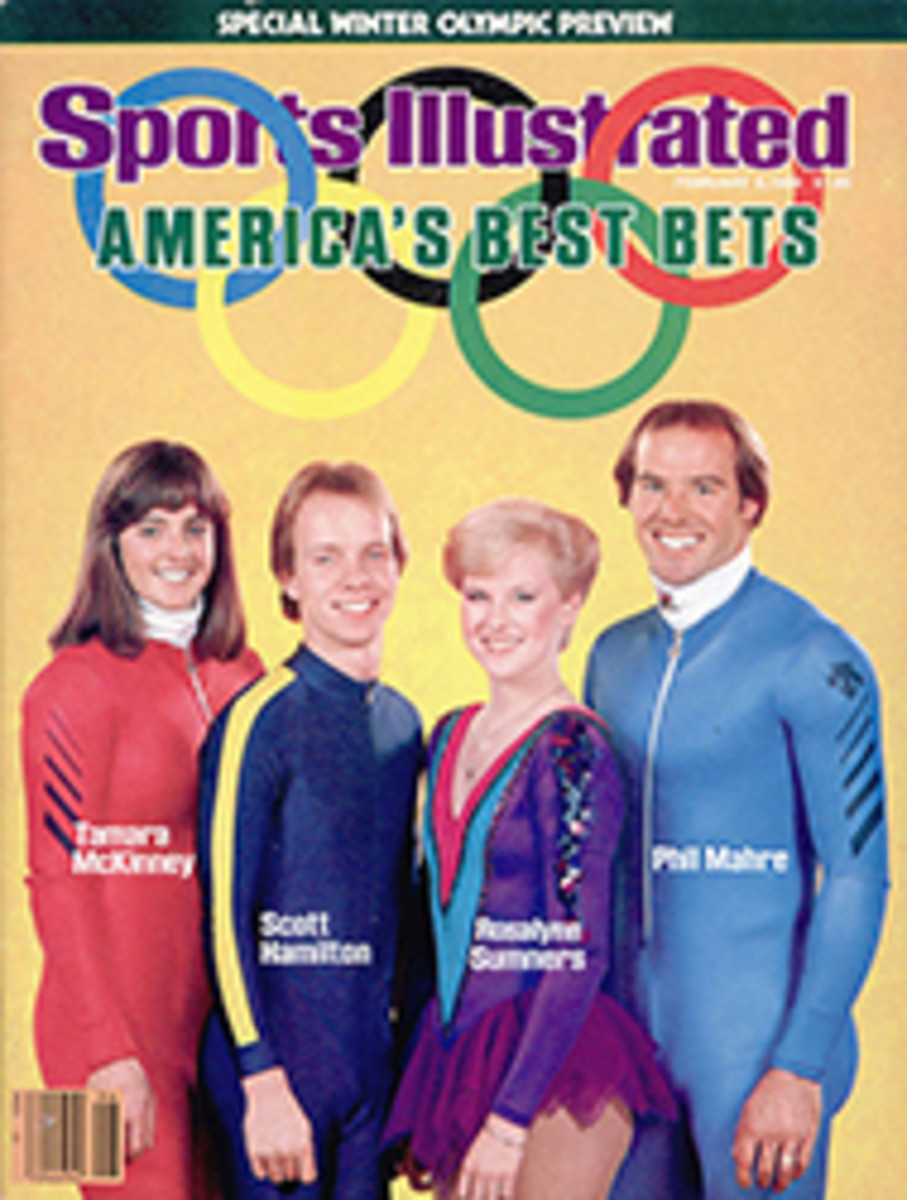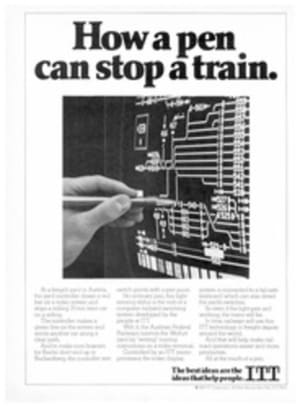
This Was Some Kind Of Jam Session
Maybe the best thing to do, said Phoenix Suns forward Larry Nance moments after winning the NBA's Slam-Dunk Championship last Saturday at Denver's McNichols Sports Arena, would be to take the trophy and $10,000 first prize and retire from such competitions. "This sort of thing is just too worrisome to have to go through every year," he said. Julius Erving of the Philadelphia 76ers, the runner-up on Saturday but undoubtedly the alltime crowd favorite, sympathized with Nance. "He's got the reputation now," said the Doctor.
Indeed, the dunk has assumed an importance that far exceeds its role in the game. Defense and team play are nice, but did you see that punk-funk-get-outta-the-way-cuz'-it's-turnin'-all-others-to-junk dunk? A slam is a manifestation of a player's soul, one that his peers appreciate as much as the fans. On Saturday there was no more striking sight than that of Magic Johnson, Mark Aguirre and Isiah Thomas, each an NBA All-Star, but mere spectators on this occasion, reduced to giggling schoolboys throughout the competition.
The heights to which the game has evolved can be measured by the power, creativity and athleticism exhibited by today's dunk artists. "The movements, the defiance of gravity—these guys have taken anything I did and have stretched it far beyond anything I can relate to," says 41-year-old Connie Hawkins, one of the dunk's earliest and most notable practitioners. In the only other dunk competition of real significance, at the 1976 ABA All-Star Game in Denver, Erving prevailed over four other players. Three of them—Artis Gilmore and George Gervin of San Antonio and David Thompson of Seattle—are still playing. But they couldn't challenge the best of today's dunkateers, and they weren't entered in this year's event.
Before his arrival in Denver, where he would also be a starting forward for the Eastern Conference's victorious squad in Sunday's All-Star Game, Erving, who is finally approaching some semblance of mortality at age 33, wondered aloud about how he came to be chosen for this year's competition—in fact, the players were selected by a 14-member panel of experts—and decried his lack of motivation. However, $10,000 can get a guy stirred up, even one as well-heeled as Doc. And the public-address announcer may well have gotten Erving aroused by saying that many of Dr. J's eight rivals were still in high school when he won in '76. Incentives aside, while Erving was the sentimental choice of nearly everyone on hand, most observers conceded that the winner would be one of the young bucks. Nance and Atlanta's Dominique Wilkins were heavy early favorites.
Both coveted the title, but neither would admit it. Said Wilkins Friday night, "Other players keep trying to put the championship off on me already. They say, 'Yeah, Dominique, you're going to win.' I just pass it right back to them: 'Nope, you're the man; you're going to win.' " Nance's unofficial coach, the Suns' All-Star guard, Walter Davis, told everyone that Nance had been perfecting his favorite slam during Phoenix practices for the past month. Sometimes he even worked on his stuff during pre-game warmups. Nance, however, denied it. "I started to do it one day in practice," he said, "but after about 15 minutes Coach [John] MacLeod told me to stop. I think he was afraid I'd get hurt."
Once the competition began, though, it was clear that Erving stood as good a chance of winning as anyone. Perhaps in deference to his stature as the defending champ, the Doctor was the final dunker in the opening round, which gave him the opportunity to judge the efforts of others for himself. Going last also allowed him to gauge another important factor: the reaction of the sellout crowd of 17,251 to each dunk. The fans' response probably did influence the voting of the five judges, three of whom—New York Mets catcher and local boy John Stearns; Adrianna Early, the wife of Denver district attorney Norm Early; and U.S. Representative Patricia Schroeder—seemed to be out of their element and more likely to vote on noise level than merit. The two other judges were Hawkins and another former basketball star, Pete Maravich.
The rules were simple: The nine contestants would take turns until all of them had completed three dunks. The judges would score each stuff on a scale from one to 10. The top four point-getters would advance to the semifinals and three more dunks. Then the two leading scorers would go on to the finals. Those two again would slam thrice.
On his first jam, the 6'10" Nance, a Clemson alumnus who's averaging 17.7 points a game in his third pro season and who leaps as well as anyone in the NBA, showed why he deserved his high ranking on the handicappers' charts. Cruising in along the baseline from the right, Nance began his leap on the near side of the rim, floated under the basket and then slammed the ball through backhanded. Hawkins was dumbfounded. "I'd never seen anything like that before," he said. "Faked on one side, dunked on the other.... I looked at Pete and shook my head. He looked at me and shook his head. We knew we'd be seeing some things that were new to us."
Actually, save for a through-the-legs, up-and-over dunk by Chicago's Orlando Woolridge, which was easily the most creative effort of the day, there was little outrageousness in the dunkers' repertoire. But the competition did have its share of high drama—like who would join the Doc, Nance and Wilkins in the semifinals. The answer turned out to be Utah's Darrell Griffith. He edged Woolridge, San Antonio's Edgar Jones and Houston's Ralph Sampson, who, despite being 7'4", was in over his head.
Whatever Erving might have lost through age, he more than made up for with flair and showmanship. A player had 24 seconds to take each shot, and the clock almost beat the Doctor on his first effort. Later, on a reverse dunk, he struck the backboard with the back of his head. Erving merely looked benignly at the offending object, patted his head to keep his Afro in place and strode boldly away.
"I was conscious of the need to spice things up a bit, to implement a bit of showmanship," he said. "That first dunk—I really wasn't sure how to approach it. Should you just take off running? Should you dribble like you're in a game and being guarded? I had to size things up."
The semis provided the contest's one moment of controversy. Going into the last round of dunks, Wilkins trailed Nance by one point and led Erving by three. Griffith was a distant fourth. Nance had preceded Wilkins with a two-ball stuff, dunking one ball with his left hand and one with his right on the other side of the hoop. The shot drove the crowd wild and was good for 48 points. Then Wilkins made a mistake that any good entertainer instinctively avoids. Instead of waiting for the applause to die down and the fans to refocus their attention upon him, he went right into his move, hitting a reverse dunk that went almost unnoticed. Apparently even one of the judges missed the shot, and when the scoreboard flashed 33, all five were asked to recast their votes. Even after that, Wilkins still got a disappointing 41. When Nance and Erving received a 43 and a 47, respectively, on their last slams, they were in the finals.
As the crowd buzzed in anticipation of the championship round, Nance huddled with Davis to talk strategy. Erving consulted two of his sons, Cheo, 11, and J, nine, as well as Philadelphia teammate Andrew Toney. Erving began by pulling down a 47 on an—for him—almost basic dunk with a very pretty follow-through. Nance took a one-point lead with a reverse jam preceded by a cradle-rocking motion.
Then came the turning point. On his next attempt, the Doctor approached the basket from straight on, levitated, switched the ball from his right hand to his left and back to his right for a whirlybird slam, but he missed the shot when his wrist hit the back of the rim. "I did something I don't normally do," Erving said later. "I got too fancy."
The highest score that a judge was allowed to give for a miss was five, but Erving's power over the proceedings was such that the scoreboard initially credited him with 26 points. That was later amended to the maximum 25, but no matter. Nance merely had to make his last two dunks to win the title. On the first of those two, he went conservative, hitting a basic straight-on jam, which elicited boos from some fans who perhaps failed to notice that his chin was almost at rim level when he threw down the ball.
The judges weren't impressed, either, and Nance's shot earned him only a 39, his lowest score for the day. If Erving was going to have any chance, he had to pull out all the stops, which he did in glorious fashion. Taking the ball at the free-throw line, he took six huge, leaping strides to the far foul line. The crowd roared and stood up in waves, anticipating what was going to come, a reenactment of Dr. J's clinching stuff in '76, when he tomahawked the ball through the hoop after taking off from just inside the free-throw line.
Picking up momentum with each stride between the two foul lines, Erving took off from the same place as he had taken off from eight years ago and rammed the ball home. He didn't soar quite as high as he had in 1976, but the fans didn't mind. They gave Doc a standing ovation. As, figuratively, did the judges, who awarded him a 50, the only perfect score in the competition.
Suddenly some fans were clamoring for Nance to miss his shot. But he didn't hesitate—or accommodate. He threw down a cradle dunk to win the championship 134-122.
Almost immediately afterward, though, the crown lay uneasy upon Nance's head. The reluctant hero stated that despite the victory he hoped no nicknames to describe him or his theatrics would be forthcoming. "I've never been able to think of one, never heard one, that I liked, and I really don't want one," he said. "I just want to stay me." Then he smiled. "Tell you what, though. I've always idolized the Doctor, grew up wanting to be ust like him."
Now, in one tall way, he is.
PHOTO
RICH CLARKSON
After Dr. J faltered in the finals, Nance put in a basic straight-on dunk that drew boos.
TWO PHOTOS
RICH CLARKSON
Win or lose, Erving, the original Doctor of dunk, will always be perfection to the fans.
TWO PHOTOS
RICH CLARKSON
Wilkins used two hands and two balls, but he neglected to grab the crowd in the semis.
PHOTO
RICH CLARKSON
Griffith had a reverse or two in finishing fourth.

